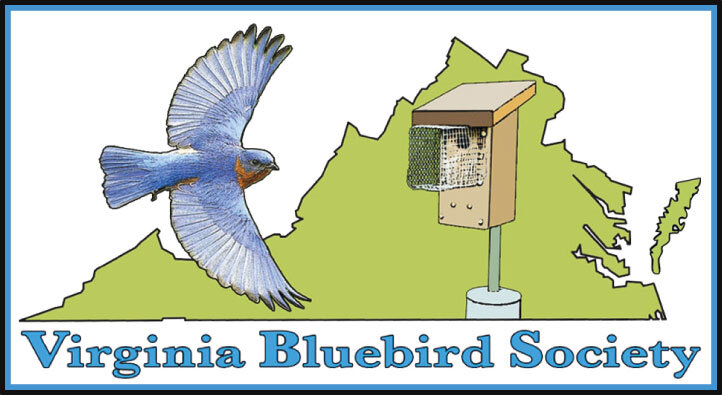Monitoring Nest Boxes
Monitoring Protocol
Our Monitoring Protocol provides information on how we feel it is best to manage and monitor a bluebird nest boxes for the best results. It tells why nest boxes should be monitored and lists specific rules and procedures we use for bluebird nest boxes. These procedures are especially useful when several different people are monitoring the same trail. Click here for more on monitoring protocol.
Monitor Information
Take a look at this summation of information which will be of use when you monitor a single nest box or an extended trail of boxes. It contains information on what to expect during the typical nesting of bluebirds: the cycle of nest building; laying, incubating, and hatching of the eggs; and fledging of the baby bluebirds. Information is also provided on some of the other birds which you might find in the bluebird nest box, and some of the typical predators which threaten the bluebirds. Also provided is a list of equipment which is useful in monitoring your bluebird trail. Click here for more monitoring information.
Trail Monitoring Forms
Provided below are forms for use in monitoring and reporting activity on bluebird nest box trails. We encourage the use of these forms to keep track of the status of the trails and as a record for reporting annual results. They may be downloaded by clicking on the title. In addition, there are detailed instructions for filling out the forms.
Weekly Nest Box Monitor Form (Word document) — This form is for use by trail monitors during the nesting season to keep records of activity for each nest box on a trail using a separate sheet for each box. For paper transmission we suggest that the Trail Monitor or Trail Leader assemble a Trail Notebook for each trail: a loose-leaf binder holding the Weekly Trail Summary Sheet, and a divider for each nest box and its Weekly Nest Box Monitor Form. For electronic records you can create a folder for your trail with separate files for each box. Also include pictures and descriptions about what to look for in guessing a chick’s age.
Nesting Guides — These forms tracks progress of individual nests from first egg through the 13th day of hatching, after which you should not open the box until the birds fledge. Use of this form helps guard against premature fledging.
Weekly Trail Summary Sheet (Word document) — This form provides a weekly summary of trail activity from start to end of the season. It is not essential, but it is useful when the trail is to be monitored by different people each week.
Individual Trail Annual Summary Form (Excel spreadsheet) — At the end of each nesting season, we ask trail owners or leaders to provide VBS a summary of the performance of their trails. These summaries are used to compile results for the whole state of Virginia. Page 1 is for a summary of results for each nest box on the trail, while page 2 is for information about the trail, including the types of nest boxes, hole size and shape, and mountings.
Instructions for completing the Individual Trail Annual Summary Form
County Coordinator’s Annual Summary Form (Optional) (Excel spreadsheet) — This form is for use by the VBS County Coordinators; it is a summary of the data from all trails in their jurisdictions.
Instructions — Click here to download instructions for using the data forms.
Disposition of completed forms
In the past, some folks sent their data directly to the county compiler, while others sent theirs to their county coordinators who then passed the data on to the compiler. Whichever way you choose to operate should be up to your county coordinator, so contact that person first. The preferred source for the data is the Individual Trail Annual Summary Form.
Send the completed forms to: Charlene Talcott, P.O. Box 522, Lancaster, VA 22503-0522 or to vabluebirdscoordinator@gmail.com.
